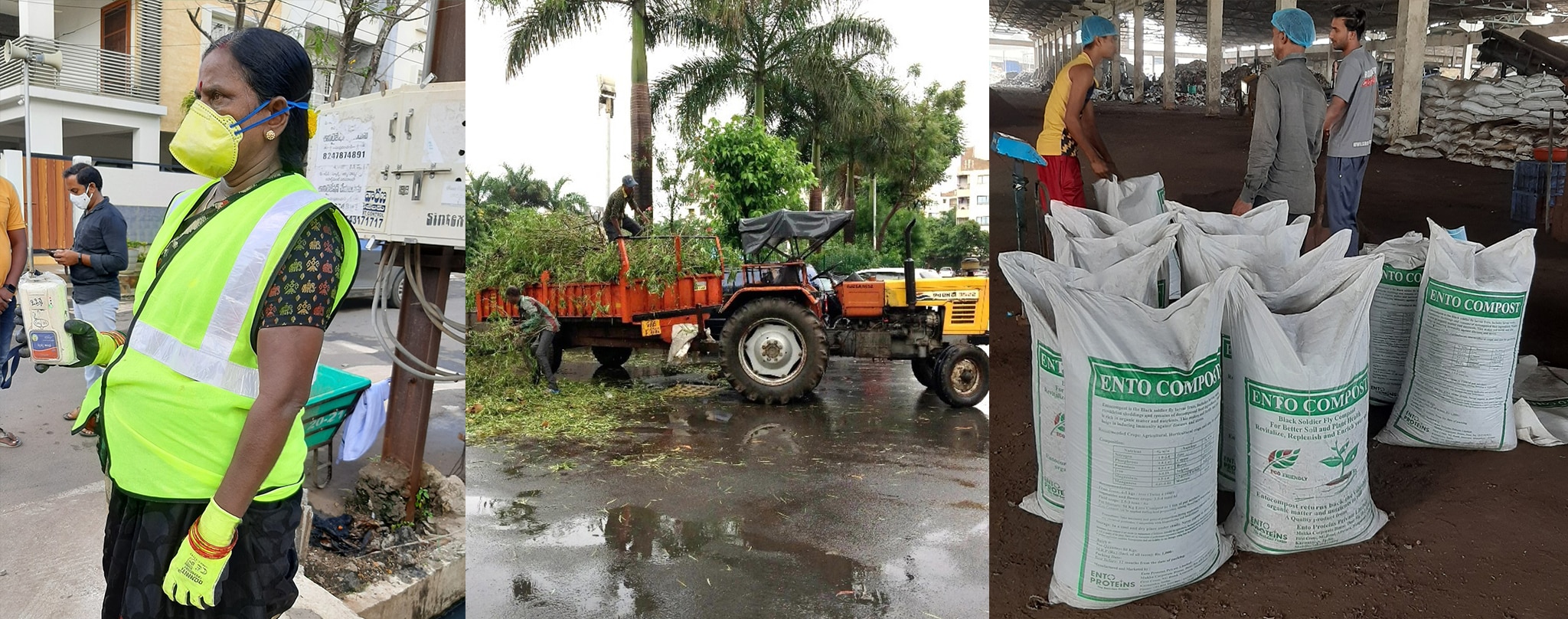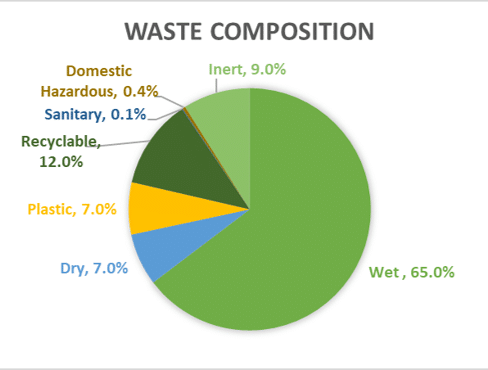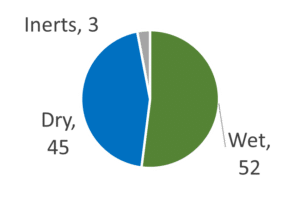
INDIAN SCENARIO OF WASTE
Sharing knowledge is best way to grow wisdom. KIF has researched to understand the parameters for building these success stories and would like to help towards contextualizing them for your particular case. Here we share a highlight of Indian case studies of waste management initiatives undertaken in various cities across the country and would like to connect with our insights and details of the case study as we connect further.
Do write to us to know more.
Mangalore case study
 Population estimated in 2022 – 6,21,000 (4,88,968 in Census 2011)
Population estimated in 2022 – 6,21,000 (4,88,968 in Census 2011)
Municipal Solid Waste generated – 380 MT
Success factor
![]()
Visible cleanliness – The city has outsourced the sweeping and the collection to the vendor, ensuring that waste is collected and transferred daily, and the city is visibly clean.
Mangalore SWM byelaws – Well framed city byelaws with strong fines and penalties to improve citizen behaviour towards waste management has been instrumental to the success story.
Pune case study
 Population estimated in 2022 – 50,00,000
Population estimated in 2022 – 50,00,000
Municipal Solid Waste generated – 2200 MT
Success factor
![]()
Wastepicker integration – SWACH model is recognised throughout the nation as a successful wastepicker integration model. Swach is a cooperation of wastepickers having a MOU with PMC to provide DTDC of waste. It services 10 lakh households, and results in source segregation of waste. Wastepickers remove the recyclable from the waste before giving it to the PMC vehicles, thereby getting good recyclable waste at source and reducing the quantity to be transported by PMC.
Waste processing – Pune has been a pioneer in waste processing technologies, it has a Composting plant that provides 30% compost yield from the waste. It is well known for the decentralised model for processing of waste. It has also established itself as city with culture of recycling with the initiatives of SWaCH and other active citizen groups.
Ahmedabad case study
 Population estimated in 2022 – 77,24,241 (Census 2011)
Population estimated in 2022 – 77,24,241 (Census 2011)
Municipal Solid Waste generated – 4100 MT
Success factor
![]()
Vehicle tracking – All the vehicles and machinery are monitored through a GPS – ICT system. ICT system is used for route optimization.
Construction and demolition waste management – System of Construction and Demolition waste collection, transportation and processing is established. 17 Collection locations have been set up in the entire city. Fixed rates for collection starting at Rs.200 per trip for waste less than 1 MT has been prescribed. The waste is converted to recycled construction products such as paver blocks, kerb stones, solid blocks and manholes etc.
Flower waste management – A separate vehicle is deployed for collection of flower waste from 150 temples for processing into compost and incense sticks.
Bhopal case study

Population estimated in 2022 – 2,479,000 (Source: Census 2011)
Municipal Solid Waste generated – 800 MT
Success factor
![]()
Decentralized waste transfer station– 12 decentralized modernized waste transfer stations with compaction technology are installed in the city.
ICT intervention – Under Smart City Mission; an Integrated Control and Command Centre (ICCC) has been developed in Bhopal. Bhopal also experimented with Smart bin with real-time monitoring. 1153 Bins of Capacities Of 1.1 And 4.5 Cu M. were installed.
Biomining – BMC has successfully biomined 31 acres of Bhanpura dumpsite, by clearing 26 acres and capping the remaining. The cleared land is to be used for a public bus depot.
Entrepreneurial ecosystem – In addition to BMC’s waste collection efforts, there are also a number of entrepreneur private waste collection organizations such as Kabadiwala, companies operating in Bhopal.
Mysuru case study
 Population estimated in 2022 – 12,29,000 (Census 2011)
Population estimated in 2022 – 12,29,000 (Census 2011)
Municipal Solid Waste generated – 550 TPD
Success factor
![]()
Decentralized processing of waste – Dry waste is processed at the 43 collection centers. This reduces the transportation of waste.
Zero Waste Management (ZWM) plants- Each of 4.5 MTPD manages both wet and dry waste. Wet waste is composted methodically and the compost quality meets the FCO norms. This is packed and sold. The dry waste is sorted in 20 types, increasing the recycling value. These are managed by NGO, SHG or agencies with wastepickers to operate.
Surat case study

Population estimated in 2022 – 61,86,933 (Census 2011)
Municipal Solid Waste generated – 2200 MT
Success factor
![]()
Awareness campaign – Surat Khusurat was successful in behavior change within the citizens.
Monitoring and enforcement – The field staff uses a walkie talkie communication system, to keep everyone aware of the issues in the city.
Compliant redressal is 96% within the specified time.
A litter patrol is operated with spot fines issued to anyone littering.
Waste generator engagement – ANUDAN is a unique scheme where Societies make an agreement with Surat Municipal Corporation (SMC) to provide regular waste management services in their designated areas, to maintain cleanliness, at the rate of 60 paise and 65 paise per sq. m respectively for residential and non-residential societies. SMC pays more than 600 societies through this scheme.
Waste from 300 hotels is collected separately through 18 vehicles operated by the Hotel association.
Vijaywada case study

Population estimated in 2022 – 14,32,362 (Census 2011)
Municipal Solid Waste generated – 550 MT
Success factor
![]()
100% processing of waste – 100% of Garbage (550 tonnes) is being treated.
13 Mechanical sweepers are deployed to maintain the city clean.
Vijaywada has received 5 star in GFC and Waterplus certification.
Stakeholder engagement – About 3919 sanitary staff, of which 3284 are from Development of Women and Children in Urban Areas (DWCUA) groups and the rest 635 workers are P.H. workers for sanitation.
Contextualizing solutions – As a temple town, it receives a lot of flower waste, this is converted to incense sticks.
Special campaigns organized for citizen engagement and awareness.
VMC has provided 6 numbers of 1.3 Cubic meters, Smart Semi Underground garbage collection bins at two locations, and 26 numbers of 3.0 Cubic meters, Smart Semi Underground garbage collection bins at 9 various locations in the city.














